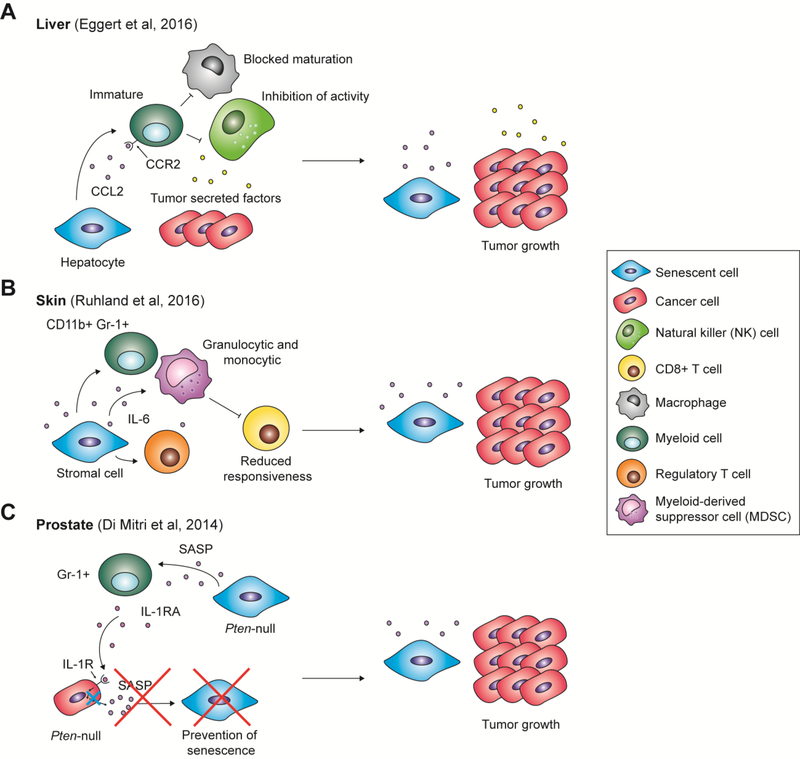Figure 3.
Senescence-associated secretory phenotype (SASP)-mediated immune cell recruitment that favors tumor progression. The SASP has been described in various contexts to create an immunosuppressive environment that drives tumor progression. (A) In the liver, the SASP factor CCL2 acts to recruit immature myeloid cells. However, combined with tumor-secreted factors, CCL2 drives myeloid cells to block the maturation of macrophages and inhibit natural killer (NK) cell activity, resulting in uninhibited tumor growth. (B) In skin, the SASP factor IL-6 recruits Gr-1+ myeloid cells, regulatory T cells, and granulocytic and monocytic myeloid-derived suppressor cells (MDSCs), which reduce CD8+ T cell responsiveness. This immunosuppressive environment allows tumor cell proliferation. (C) In the prostate, the SASP recruits Gr-1+ myeloid cells, which secrete IL-1 receptor antagonist (IL-1RA). IL-1RA binds IL-1R, blocking IL-1-mediated SASP production necessary for the induction of paracrine senescence, thus allowing tumor growth.

